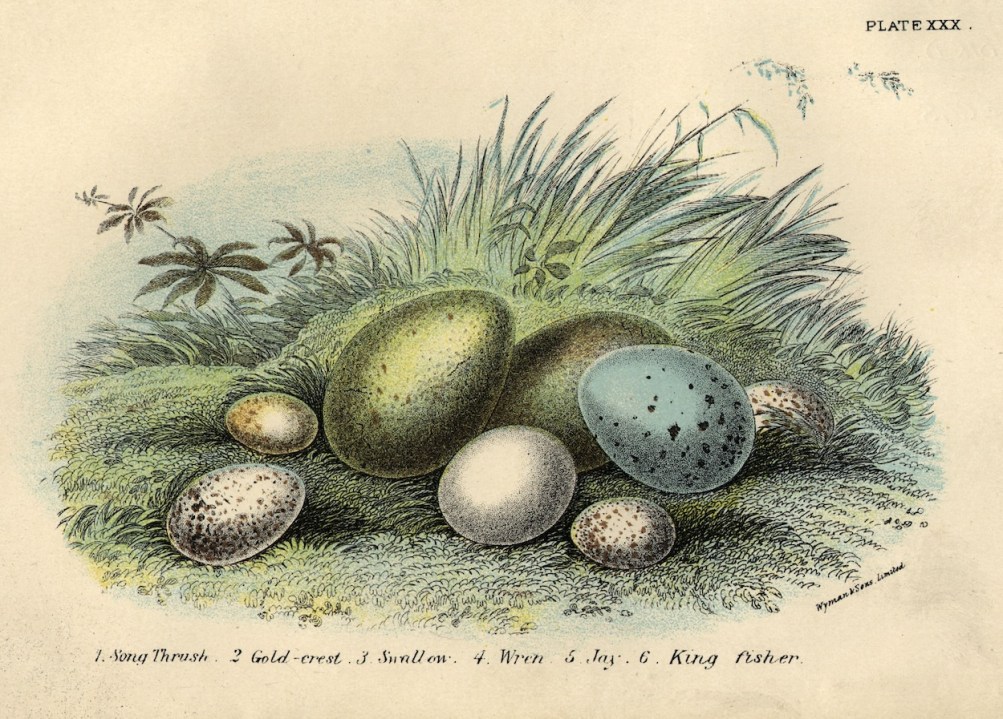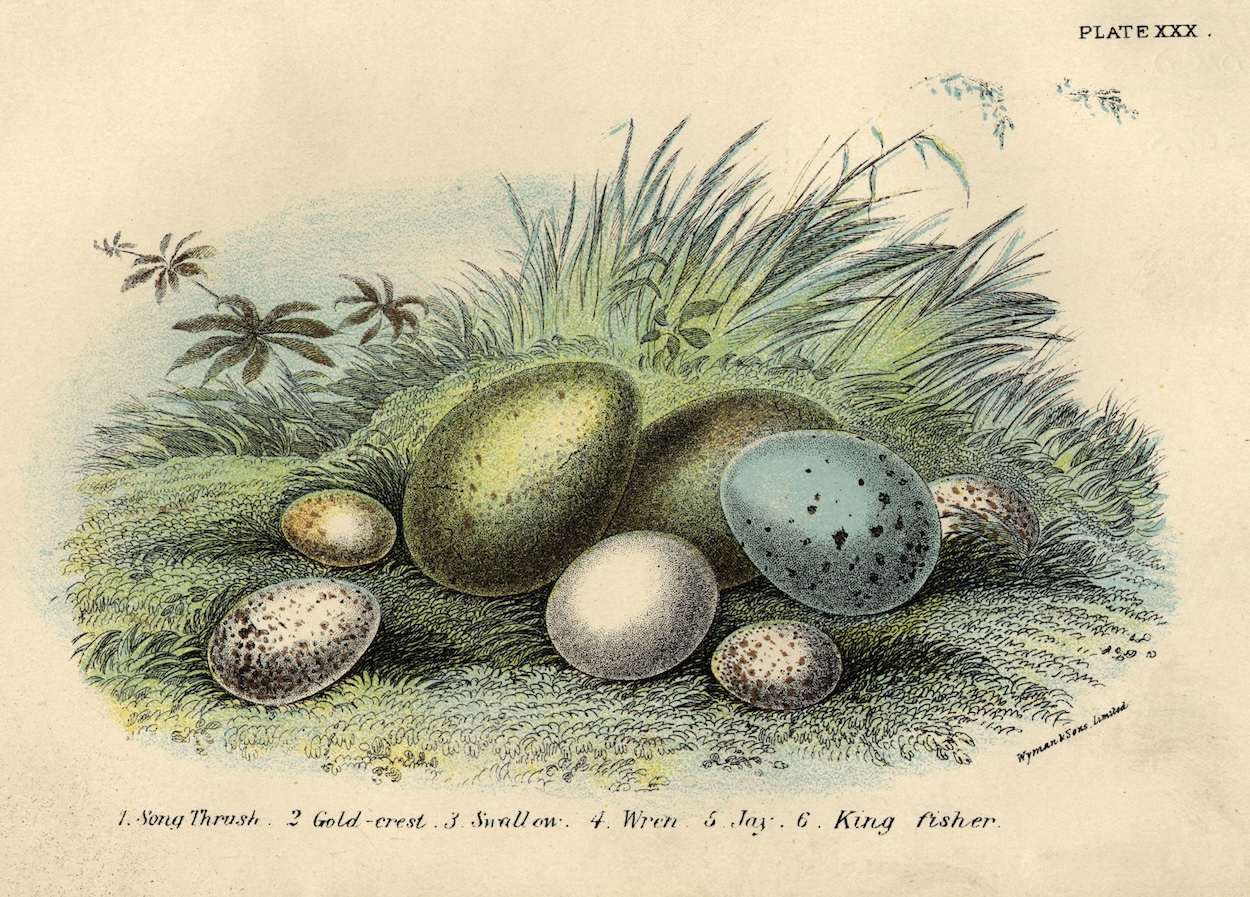‘We English prefer brown eggs,’ wrote J. B. Priestley in the 1970s, ‘they seem to us to have a more reliable look of rusticity.’ The mottled chestnut shell of a Burford Brown is surely more genuine than the clinical, white-shelled variety favoured by the American market. It’s a charming point, but there’s really no relationship between shell colour and the egg itself. Eggs from the Chilean Araucana hen are a beautiful blue, and if you were to crossbreed an Araucana with a brown egg hen, the pigments mix and you get green eggs. The Chinese Cochin dapples her eggs with delicate yellow spots.
The colour of yolks is enhanced in factories by adding dried marigold leaves to the chicken feed
Yolks are deceiving too. The deep orange ones aren’t more nutritious or tasty. The colour of yolks (xanthophylls pigment) is enhanced in factories by adding dried marigold leaves to the chicken feed. Besides, the word ‘yolk’ derives from Old-English ‘yellow,’ which is a far cry from the weird paprika Golden Yolk variety of supermarket eggs.
The flavour of eggs is so mild that much of what you taste has to do with cooking technique. The ‘eggy’ taste comes from hydrogen sulphide released mainly from the whites, but its release is relative to cooking time which is why a hard-boiled egg tastes more like egg than its briefly fried counterpart.
Indeed, ‘the faster the better’ seems the motto of east Asian wok chefs. A Chinese coin purse egg is cracked into a smoking-hot wok with much dramatic sizzling. After a few seconds, it is folded over and sealed like a calzone. The result is a crisp exterior and a soft buttery inside.
French-style cooks deviate. ‘If you can hear that egg cooking, then the heat is too high,’ warns Marco Pierre White. His frying technique is more like poaching, but in butter instead of water. Butter has a water content of about 15 per cent which prevents it from getting as hot as oil. The eggs turn out blister free, and very pretty, but there’s a lack of theatrics.
Not that Marco would listen to advice on how to cook them any other way. ‘You’re teaching grandma how to suck eggs,’ he’d probably reply. A curious phrase first recorded by an 18th-century Spanish author. The apocryphal origin was that toothless old people couldn’t eat eggs in the normal fashion, so had to suck out the raw contents through a pinhole in the shell. A hilarious image, but what of the easily gummed scrambled or coddled eggs?
True or not, the salmonella crisis of the late 1980s put a stop to the eating (or sucking) of raw eggs for the elderly and vulnerable. Edwina Currie told the nation: ‘most of the egg production in this country, sadly, is now affected with salmonella.’ Her statement resulted in the destruction of 400 million eggs. It also upset traditional chefs who used raw egg in desserts and sauces. Some styles of Italian and Swiss meringue – made by whipping ultrafine sugar with raw egg white – were a casualty. To get around it, chefs swapped the granulated sugar for boiling sugar, which cooked the eggs as they were being whipped. This method is still taught to apprentice chefs. Today, due to advancements in farm hygiene, British Lion eggs have been deemed safe to eat raw for the past seven years. Raw meringue, anyone?
Chefs are an inventive species. If you’ve ever wondered how poached eggs in big restaurants are so consistent and perfect, it’s easy. A few dozen eggs are dropped simultaneously into simmering water and after a minute the chef takes them out one by one: pretty ones into ice water, ugly ones into the bin. The ones in water are then stored until an order. A jiffy in a pan of hot water and voila.
Perhaps it’s best to go for the plant-based option. ‘Egg plant’ is the North American term given to aubergines, which is not as silly as it sounds. We are used to the oval purple variety in supermarkets, but the cultivars now known as ‘Casper’ or ‘Easter Egg’ were historically more popular. These look remarkably like eggs when they grow. One 16th-century botanist marvelled at the similarity when he grew one in London: ‘it came to beare fruite of the bignes of a goose egge one extraordinarie temperate yeere.’
The downside is that you can’t make meringues out of aubergines. The opposite is true for chickpeas. The viscous water you drain from a can of chickpeas is named aquafaba and can be whipped just like egg whites into a soft-peaked meringue.
Big question: did the chicken or the egg come first? For the pedantic, eggs in the general sense did come before chickens (the amniote dinosaur egg is more than 300 million years old). For chicken-specific eggs however, the answer is still the egg. In evolutionary biology, chickens are the result of interbreeding between various junglefowl. A mutation during one of these romances resulted in a fertilised egg whose DNA was distinct from its non-chicken parents. Upon hatching, the first chicken was born.







Comments